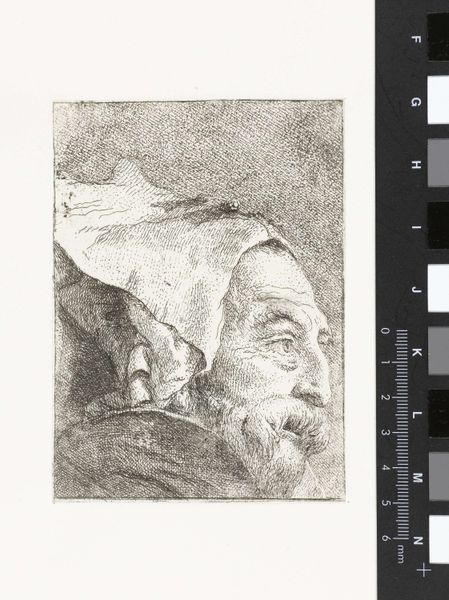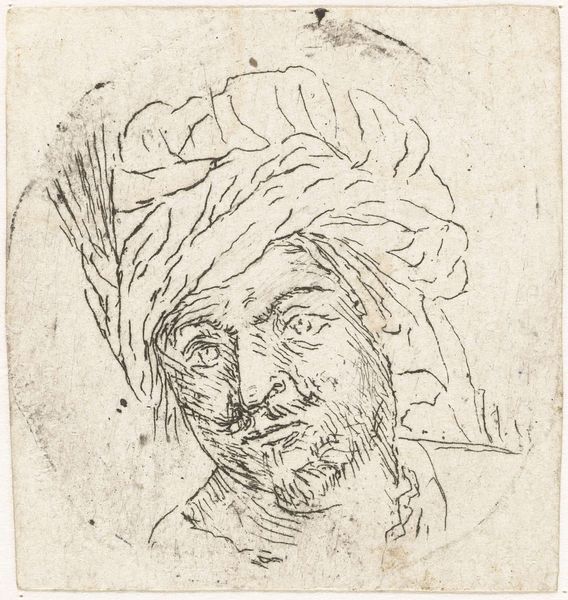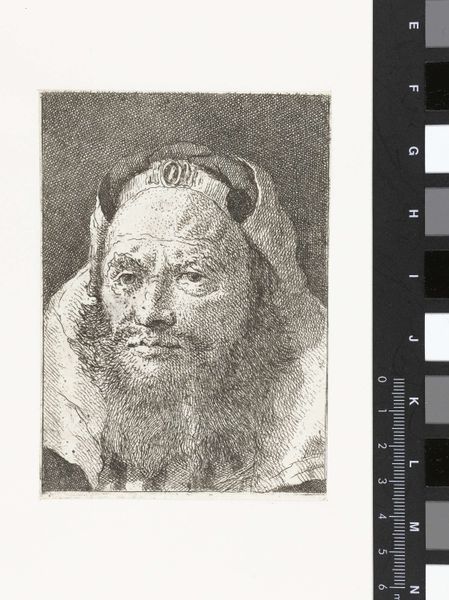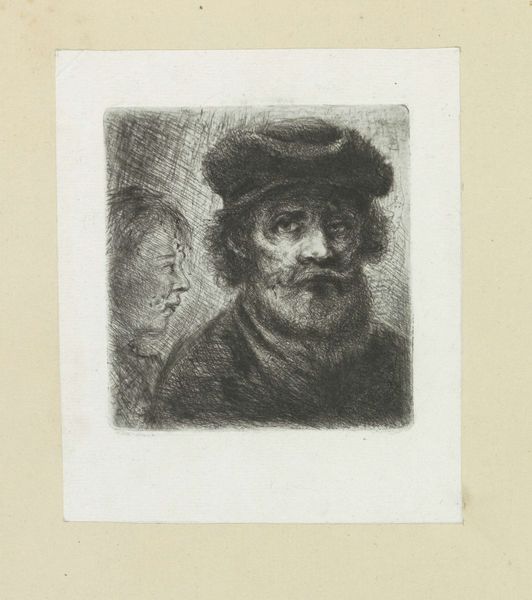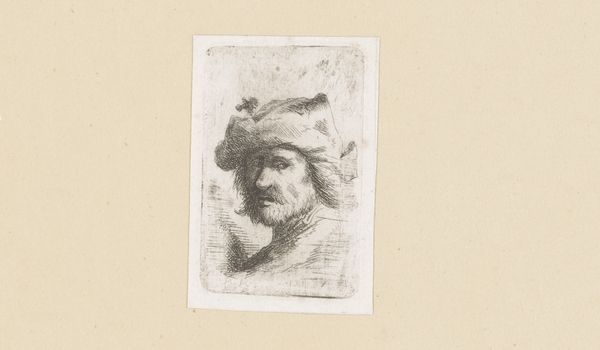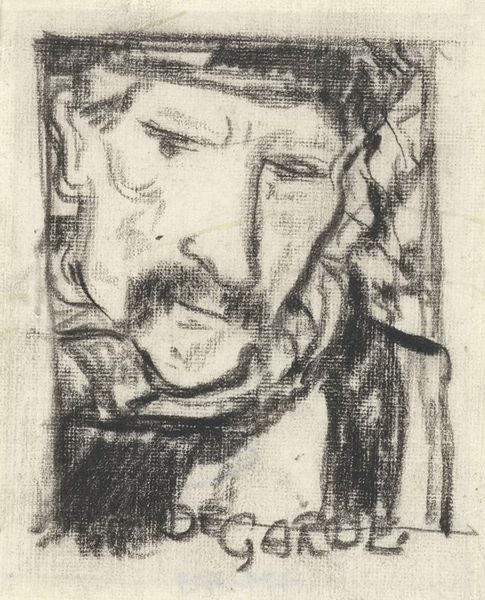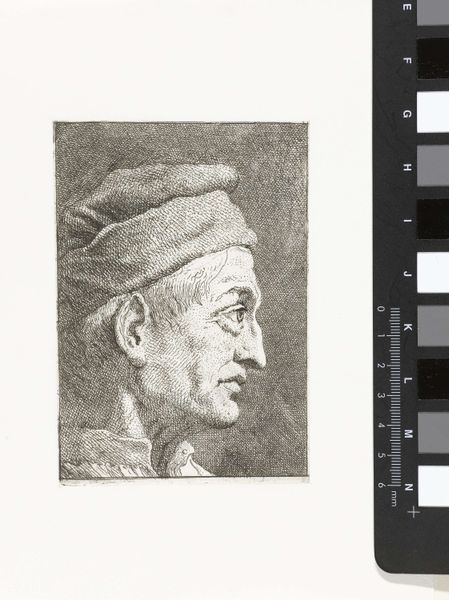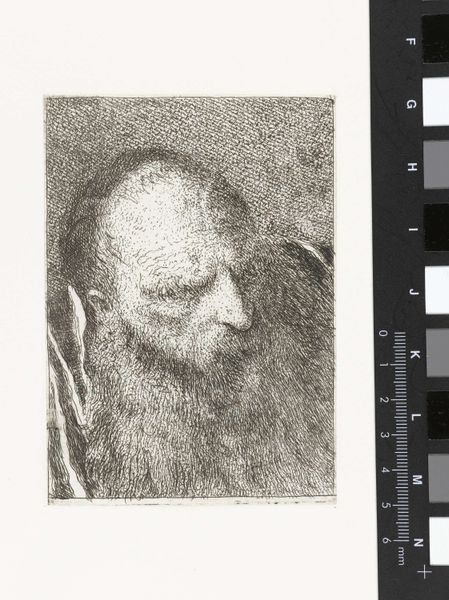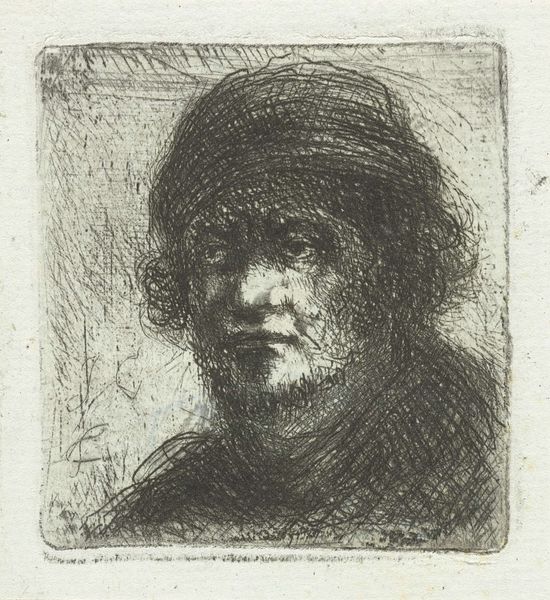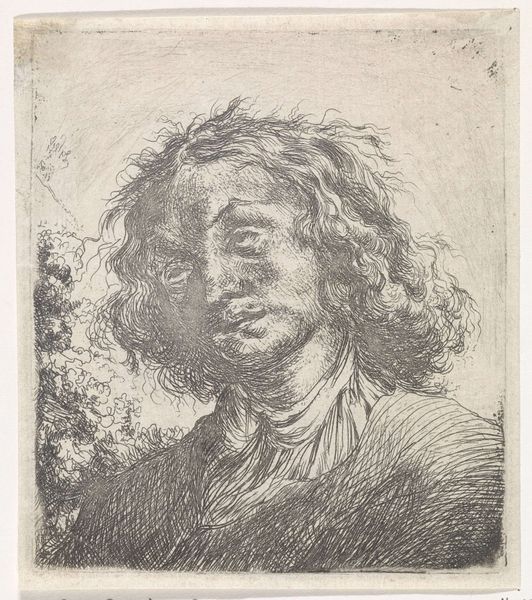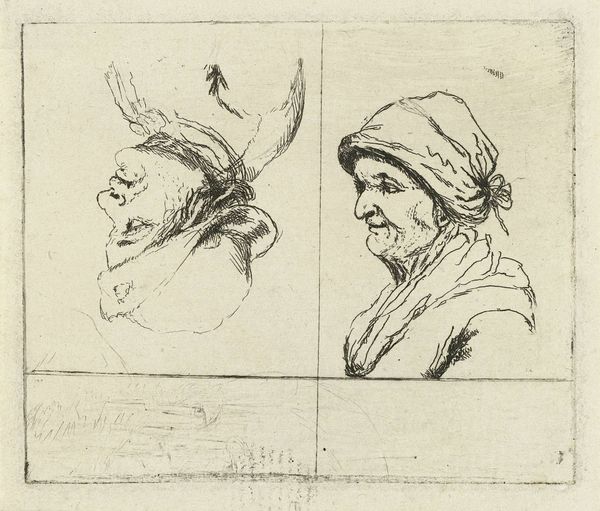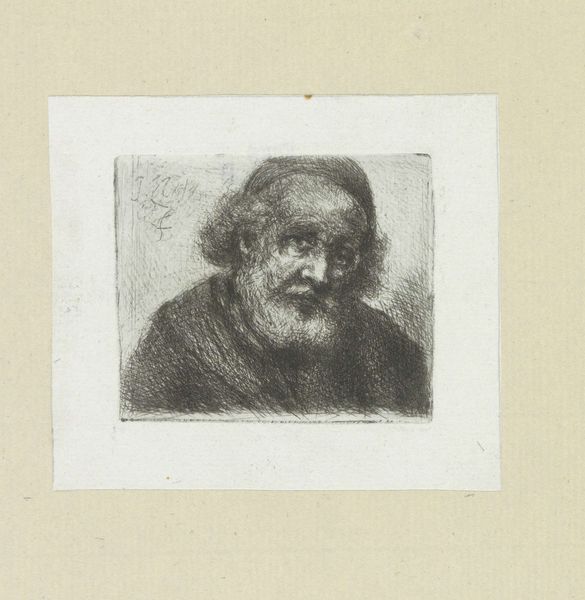
Dimensions: height 108 mm, width 87 mm
Copyright: Rijks Museum: Open Domain
Editor: Here we have Giovanni Domenico Tiepolo’s "Man with Moustache and Turban," created between 1771 and 1774 using pen and drawing techniques. The subject’s intense gaze is what I noticed first. How do you interpret this work? Curator: This piece, like much of Tiepolo's work, exists within a complex historical frame. The turban itself is a significant symbol. How does it intersect with contemporary discussions of orientalism, and the way Western art historically depicted the "other"? We can think about the power dynamics at play, even within what seems like a simple portrait. Editor: So you are saying that it may appear like a normal portrait but has an inherent political message? Curator: Precisely. Consider the Baroque period. The exotic was often fetishized, fueling colonial narratives. This image invites questions about representation and cultural appropriation. Was Tiepolo aiming for ethnographic accuracy or indulging in a romanticized vision? Furthermore, what class does this man seem to belong to? Does the clothing offer clues to the social role? Editor: He definitely doesn’t seem wealthy. Curator: Right. His face, etched with lines, speaks to a life of possible hardship, maybe of a merchant or a tradesman. It is this collision of cultures, social class and artistic license that make the drawing compelling. How does acknowledging these layers influence your own understanding of the artwork? Editor: I never considered those aspects when looking at the drawing, focusing more on its technical mastery. Seeing it through a social lens has broadened my perspective. Curator: That's exactly it. Art isn’t created in a vacuum; understanding its context reveals so much more.
Comments
No comments
Be the first to comment and join the conversation on the ultimate creative platform.
